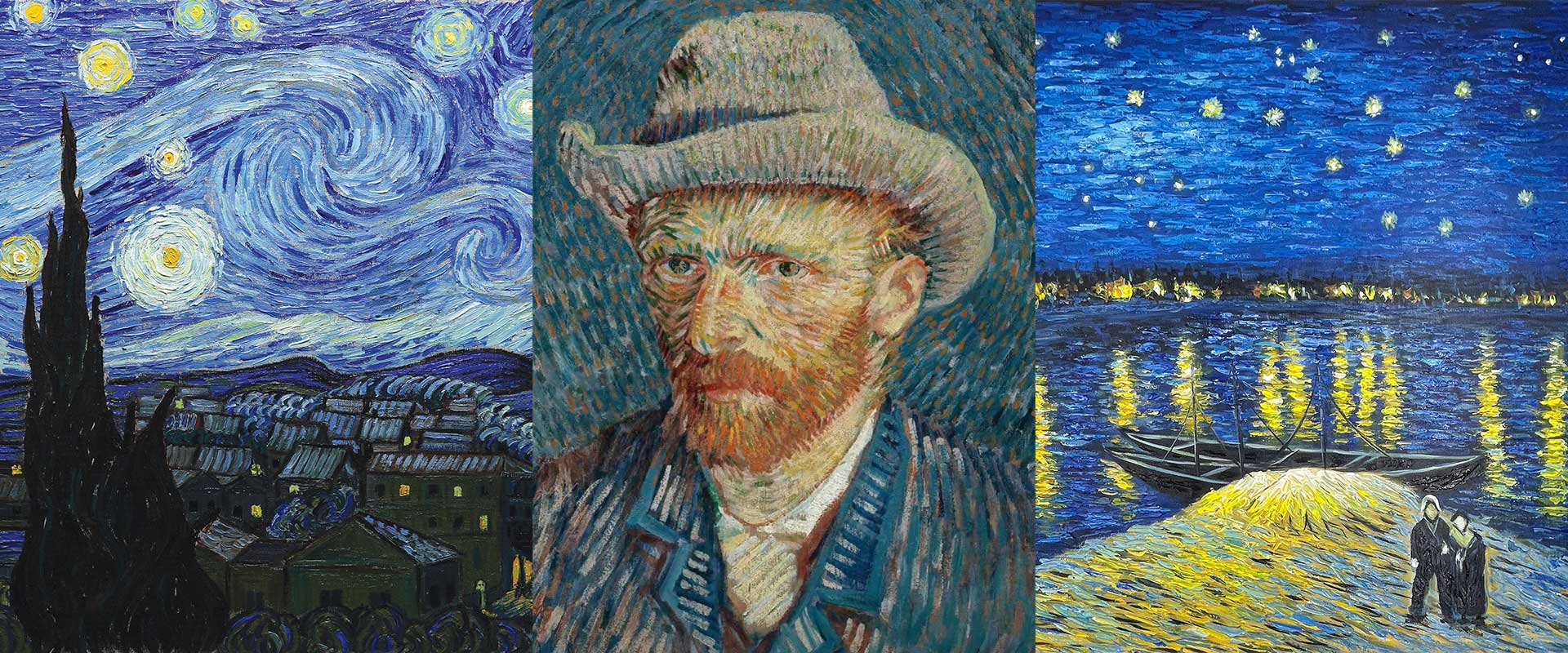Few artists in history have captured the magic of the night sky quite like Vincent van Gogh. With swirling stars, glowing moons, and vibrant blues, his nocturnal paintings pulse with emotion and energy. Two of his most iconic night scenes—Starry Night and Starry Night Over the Rhône—are often compared for their shared subject, yet they offer distinctly different artistic experiences. In this article, we’ll explore the stories behind these masterpieces, what makes each unique, and how they reflect Van Gogh’s evolving style and state of mind.
If you’ve ever wondered what sets these two celestial scenes apart, or which might suit your living space best as a wall art piece, you’re in for a star-filled journey.
Van Gogh’s Fascination with the Night
Why He Painted the Night Sky
Van Gogh was fascinated by the mystery and mood of nighttime. In a letter to his brother Theo, he once said, “The night is more alive and more richly colored than the day.” For him, the night wasn’t dark—it was full of meaning, emotion, and divine presence. This emotional connection is visible in many of his works, but particularly in his famous night skies.
Techniques That Bring the Night to Life
Van Gogh employed bold brushstrokes, contrasting colors, and rhythmic movement to give life to his night scenes. Whether painting the peaceful Rhône or the dramatic skies above Saint-Rémy, his use of cobalt blue, ultramarine, and vibrant yellow created luminous, almost supernatural atmospheres.
Starry Night Over the Rhône (1888)
The Scene and Setting
Painted in September 1888 while Van Gogh lived in Arles, Starry Night Over the Rhône captures a quiet moment by the riverbank. The stars glisten above, their light reflected in the water below. In the foreground, a couple strolls together, grounding the cosmic display in human connection.
Artistic Style
This painting is a poetic blend of realism and impressionism. The stars are radiant but gentle, and the water glimmers softly with city lights. The brushwork is controlled, and the mood serene—showing a Van Gogh who was introspective but balanced.
Symbolism and Emotion
Here, Van Gogh explores solitude, romance, and contemplation. The river reflects not just the light of the stars but perhaps Van Gogh’s hope for peace and connection. Unlike the swirling chaos of his later night sky, this one is calm, perhaps even optimistic.
The Starry Night (1889)
The Scene and Setting
Painted a year later from the asylum at Saint-Rémy-de-Provence, The Starry Night is one of Van Gogh’s most recognized works. Though painted from memory and imagination, it features a dramatic sky over a quiet village and distant mountains. A towering cypress tree stretches up toward the stars.
Artistic Style
This work is expressionistic, even abstract in parts. The sky swirls with motion—stars blaze in spirals, the moon glows fiercely, and the brushstrokes are thick, layered, and dynamic. It’s as if the universe itself is in flux.
Symbolism and Emotion
Unlike the gentle peace of the Rhône scene, The Starry Night is emotional and turbulent. It reflects Van Gogh’s inner turmoil and longing for spiritual transcendence. The church spire in the village contrasts with the chaotic sky, hinting at the tension between earthly life and cosmic forces.
Key Differences Between the Two
| Feature | Starry Night Over the Rhône | The Starry Night |
| Year Painted | 1888 | 1889 |
| Location | Arles, France | Saint-Rémy-de-Provence, France |
| Painted From | Life, outdoors | Imagination and memory |
| Style | Realistic with soft impressionism | Expressive, abstract, emotional |
| Mood | Calm, romantic, reflective | Turbulent, cosmic, intense |
| Elements | River, stars, couple, gaslights | Village, cypress, hills, swirling sky |
What These Paintings Reveal About Van Gogh
Van Gogh’s night paintings weren’t just visual representations—they were emotional and philosophical expressions. Starry Night Over the Rhône shows a Van Gogh still connected to the world, finding beauty in shared human moments. The Starry Night reveals a more isolated artist, looking beyond Earth for meaning.
These two works mark a pivotal transition in his artistic journey—from external observation to internal exploration.
Which One Should You Choose for Wall Art?
For Calm and Romantic Vibes
If you love subtle elegance, romance, and harmony, Starry Night Over the Rhône fits beautifully into bedrooms, reading corners, and minimalist interiors.
→ Browse curated expressionist options at:
Expressionist Wall Art Prints
For Bold and Dynamic Spaces
If your style leans toward bold, creative, or moody decor, The Starry Night is a showstopper. Its movement and energy suit living rooms, offices, or creative studios.
→ Explore visionary Van Gogh-inspired art here:
Vincent Van Gogh Wall Art Prints
How These Paintings Impacted Art History
Both paintings were revolutionary. They pushed the boundaries of how night and emotion could be painted. The Starry Night especially influenced modern art movements such as expressionism and abstraction. Even today, both paintings continue to inspire artists, collectors, and dreamers around the world.
Conclusion
While both Starry Night Over the Rhône and The Starry Night feature celestial skies, they offer entirely different experiences. One is grounded in reality and romance; the other soars into abstraction and cosmic drama. Together, they show the depth of Van Gogh’s genius and the emotional spectrum of his artistry.
Whether you prefer the tranquil reflections of the Rhône or the swirling energy of Saint-Rémy, both pieces are windows into the heart of one of history’s most beloved artists. Add either to your space—and you’ll not just decorate your walls, you’ll invite wonder, introspection, and beauty into your everyday life.





